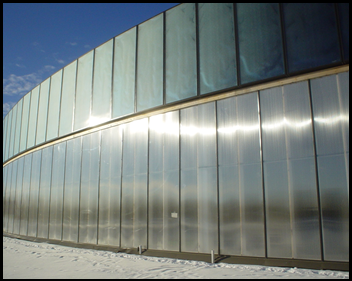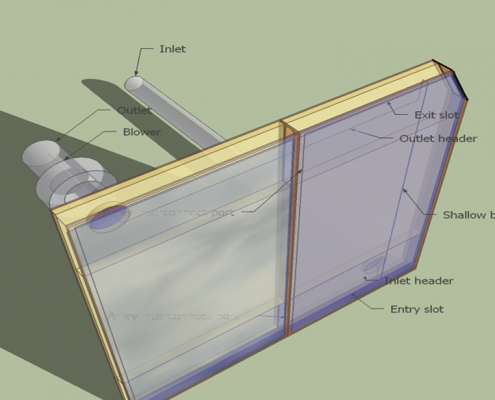Solar Heating
Harnessing Solar Renewable Energy
What Is Solar Heating?
Solar thermal heating is a process using a solar panel to capture the sun’s heat and place it into a home’s heating system through the water or air. We use two types of solar panels: Solar Air Heating and Solar Water Heating.
Solar Air Collectors
Utilizing panels from 4′ x 2′ to 4′ x 10′ to capture the sun’s heat, Solar Air Heating panels are placed in the most efficient place possible to capture the most heat in the winter.
Solar Air Collectors use a controller that either works with a home’s heating system or independently. The controller senses how warm the home is and, if the panels are hot enough, provides heat to the home via a fan. These panels can be used for almost every heating need and can be installed on homes, rentals, commercial buildings, cabins, garages, sheds or just about anything that requires heat.
Solar Water Heating
Solar Water Heating panels are used to heat water for either a home’s domestic hot water and/or to heat the water used to bathe, clean and cook. It can also be used to heat a home through existing equipment, whether be it a forced-air or radiant-heat system.
The panels use a flat piece of metal, coated with a black paint, which is highly conductive to the sun. On the back side there are tubes welded which are filled with antifreeze so they don’t freeze in the wintertime. As the sun heats up, the metal’s heat is transferred into the tubes which then heats up the water for the house.
These panels can provide up to nine months of all hot water needs, and each system is sized around the needs of the consumer. These panels can be used for almost every heating need and can be installed on homes, rentals, commercial buildings, cabins, garages, sheds or just about anything that requires hot water and/or heat.
Does Solar Work in Northern Utah?
It works great in Northern Utah, especially with so many clear days in the summer and winter. Even with the inversion, Northern Utah still gets solar radiation through the clouds to heat up the air and/or water panels. Plus, it comes with the added benefit of keeping Cache Valley’s air just a bit cleaner!
What Can I Expect from a Solar System?
A solar system provides hot water or warmth to a home once the sun shines. Solar systems can be designed for “coasting” or the ability to store hot water for days after the sun has stopped shining due to a storm or bad weather.
Depending on the size and design, solar systems typically can handle day-to-day demands, which typically consist of 20 gallons of hot water, per person, per day. We can also size the collectors, storage and temperatures around a homeowner’s needs.
What Rebates are Available?
The federal government offers a 30% tax rebate. This 30% comes off the final bill. It counts towards everything, including the parts, labor and permits. This rebate has no cap. So, it doesn’t matter if a bill is $10 or $10 million, the homeowner may take 30% of the total towards taxes. This rebate ends in 2016.
The state government offers a 25% tax rebate. This 25% comes off the final bill. It counts towards everything, including the parts, labor and permits. This rebate has a $2000 cap. This means that homeowners get 25% of the bill, up to $2000. So, if a bill is $9000, the homeowner would only get $2000, not $2250.
Questar Gas offers a $750.00 rebate towards any solar-assisted, gas product. So, if a homeowner uses solar to pre-heat water that a natural gas water heater would normally heat, Questar will pay $750.00 for installing the solar system.
There is also state and grant rebate money available on occasion. These rebates are not consistent, but are only around for short times and are usually on a first-come-first-serve basis.
Give us a call today at 435.750.0880 to start saving money and the environment with the comforts of solar thermal heating.


